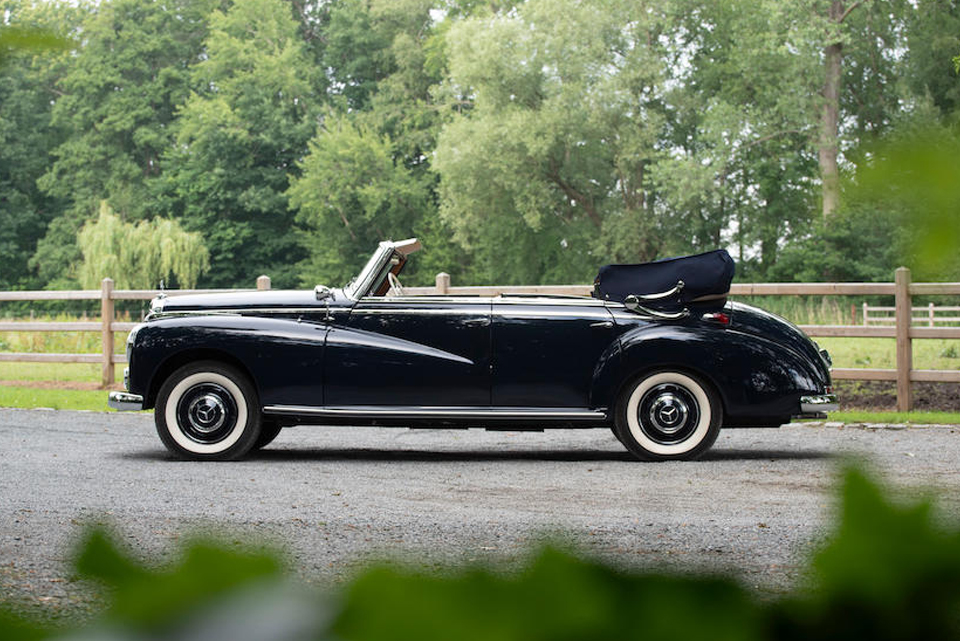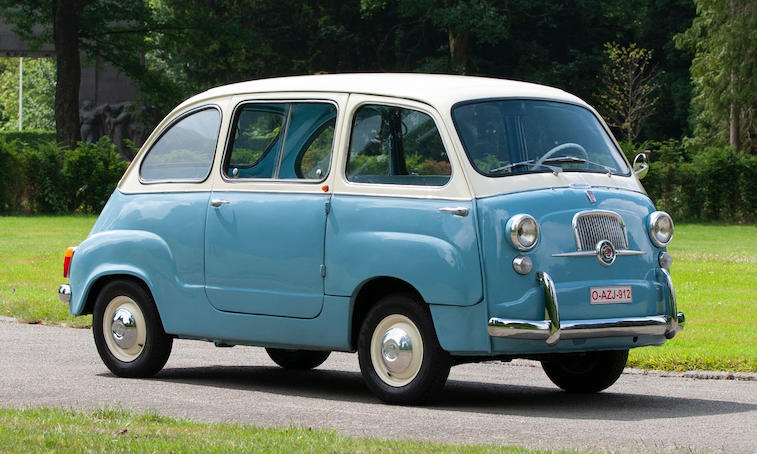Photo credit: Bonhams
While waiting for a vaccine that permanently frees us from Covid-19, many auction houses, after a “virtualization” period of 4-5 months, are attempting to organize physical auctions with mixed results. It’s almost as if they’ve agreed together, as starting 1st September many sales have returned to being organized in fantastic venues with physically examinable cars and buyers who greet each other with warm bumps of the elbow before fighting over the lot that interests them, by waving their palettes.
Bonhams tried its luck, too. But whereas RM set its sights on a great classic (Auburn) and Gooding pulled out some seriously heavy artillery in London, Bonhams fought an uphill battle from the very first lot. By pure coincidence, the event in Brussels was the first one post-lockdown and this forced them to stake their reputation on a formula that hadn’t been tested, in a nation without its own historical automobile heritage (although the museum where the auction was organized is gorgeous) and without any related event that could attract additional collectors. Let’s just say if you were there, it was because you wanted to buy, you didn’t chance there by accident.
In addition to the “non-amicable” environment, the cars didn’t exactly help as you’d be hard pushed to say they were the most desirable ones on the market. With only one Ferrari (a 365 GT4 2/2 at that), few Porsches and just two pre-war Mercedes as a top lots (both unsold) the sale was never going to be a truly outstanding one. It’s no surprise that just 33 (54%) of the 61 cars on offer were sold, while they only managed to bring home 37% of their estimates (€2,055,050 compared to the total minimum estimate of €5,540,000). Indeed, this result of “just over 2 million” is hardly what you’d call a flattering result; remember that the top lot at Retromobile sold for more than double that figure.

The most expensive car at the auction was a 1952 Mercedes-Benz 300 Adenauer Cabriolet. This model was the last of a dynasty of large four-door sedans with folding roofs – later only political figures and religious leaders continued with this configuration – which, between the 1920s and the 1930s represented the pinnacle of luxury. The current owner, a surgeon, had commissioned a…. surgical restoration! Started in 2013, a few months after finding the right example, the pursuit of perfection lasted over five years and, as often happens, once the work ended, so did the fun. With just 40 kms covered in the last two years and an estimate of 220-300,000 euros (which probably did not even cover the cost of the restoration) it was awarded for 270,250 euros.
At this auction, where just 12 out of 33 cars reached their minimum estimates (but if we consider the “hammer” price, i.e. without buyer fees, that figure drops to just 5), there were many deals to be made.
Even if the most eye-catching one was the Citroen Traction Avant 7C Cabriolet, which was sold for €34,500 (against an estimate of €60-80,000) we should be careful not to fall into superficial traps. The non-original engine (not even the same type), and above all, the announcement in the hall that it was not a real cabriolet but a sedan that was transformed in an unspecified period, blocked any possibility of approaching the expected price.

Among my favourites at this sale, a special mention must go to the 1959 Fiat 600 Multipla. Although contemporary social distancing norms mean you can no longer cram 6 friends inside this “concentration of smiles in a jar”, you can always take advantage of the wait we’ve been granted once again to fix some elements in need of a refresh since its last restoration a decade ago. Sky blue with a white roof, it symbolized the whole joie de vivre of the 1950s. With numerous pieces of support, including Italian documents (including the important ASI certification), a folder full of Belgian documents, books and manuals, it was the perfect ”starter classic” for any enthusiast taking their first steps into this world. Estimated €30-50,000 was literally stolen at €17,250.

With a higher budget you could have taken home what I think was the lot with the best price/quality ratio of the day. The car in question was a 1971 Aston Martin DBS Vantage, ruby red with black interior delivered new to the UK. As prices of the DB4-5-6 series were on the rise, the DBS saw its value exceed €125,000, but now that the former models have fallen in price, so too has the DBS. In consideration of the five-speed ZF gearbox on the one hand, and the non-original engine (but of the same type) on the other, the estimate of €70-100,000 seemed more than correct, although I am sure it deserved more than the €60,950 it went for.

With almost half of the cars left unsold, my choice for this sale fell on a car that “came back”. I’m not a fan of jeeps, let alone SUVs (although commercially I wholeheartedly understand their attractiveness), but the 1974 Mercedes-Benz Unimog 406 Doppel Kabine 4×4 Utility was the most “wacky and weird” vehicle you could have wished for. It seemed like a creation by George Barris but instead it was delivered new to the German army who used it to tow aircraft at an airport. Put to rest between 1980 and 2017, they only produced 353 in this configuration but only a handful totally original variants remain. With the dual cab making it ideal to transport more people, it’s a hipster alternative to the “latest-model-year” SUVs that flood the Swiss valleys at Christmas. Ready for the winter season? I have made my choice.